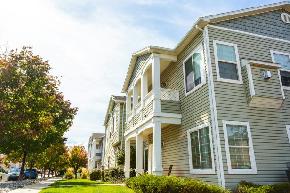 Jay T. Henning
Jay T. Henning
As an owner, investor or facility manger, how much value do you place on your property’s roof? Out of sight, out of mind? Or do you hope to extend your roof’s useful life beyond the term of your loan? Roofs are one of THE single biggest ticket items for real estate portfolio owners, especially for properties like warehouses, retail centers and office complexes. They are expensive to replace, problems that are not maintained can be difficult to fix later, and roof damage can have secondary impact on the rest of the structure and building envelope.
Regular, proactive roof maintenance can save big money and extend the useful life of the asset by identifying warning signs early on. It also helps owners and property managers avoid getting those emergency (and costly) roof leak phone calls. Most importantly, investing small amounts in maintenance is but a drop in the bucket (amortized over the life of the loan) compared to an outright replacement. As you budget for your 2019 roof expenditures (everything from capital replacements to maintenance), here are a few simple roofing maintenance tips to consider now to avoid bigger problems down the road.
The most important component of proactive maintenance is an annual inspection. Consider engaging with knowledgeable consultants who are experienced in roofing assessments and solutions. They can help to create a maintenance list, perform detailed inspections, and provide a record of maintenance for future planning. The consultant can also help you to evaluate whether the current roofing fits your needs (type and age as compared to usage, access, length of stay, etc)? If you do plan for an eventual replacement, answering these questions can help choose an appropriate model within the right price range.
 Phillip D. Miller
Phillip D. Miller
The following is a comprehensive list of services that are a part of roof maintenance and replacement:
- Roofing System Condition Assessment (RSCA) – specialized assessment of roofing materials and systems resulting in a written Roofing System Condition Report (RSCR) with anticipated immediate and reserve costs. This can include opinions of ongoing maintenance practices and costs (Roof Management Plan) if specifically requested by the client.
- CAD Generated Roof Plans – an add-on supplement to the RSCR, detailed measured plan of the roof area identifying locations of significant issues or deficiencies.
- Core Samples – taken, with written authorization from Owner, to determine exact composition of a roofing system (also used during moisture scans).
- Warranty Review – assists in deciphering the available warranty documentation to determine coverage, transferability, etc.
- Moisture Scan (generically called IR scans but may also include electrical capacitance or nuclear depending on roofing materials) – identifies potential areas of entrapped moisture within a roofing system, targets area for repair/replacement and is also utilized to determine if a recovery system can be utilized in lieu of full replacement. Core samples are taken to verify the presence and degree of moisture within the roofing.
- Code Review – determines current local building code requirements (used for planning replacements)
If, in consultation with a roofing inspector, it is determined that you really do have to reroof, there are two key ways to keep costs down. One, obtain a re-roof assessment, which can include various services from moisture scans, core samples, warranty review, and code review mentioned above. This will be essential information to conduct a proper rebuild. Second, and most importantly, obtain apples to apples bids from contractors to find the best fit for your project.
To help you make sure that the roof replacement process occurs on time, on budget and results in a quality final product, consider these additional solutions:
- Roof Rehabilitation Program Development – work with consultants to produce a full set of construction documents (specifications, drawings, bid forms, contract documents, etc.) for use in competitive bidding of a project. This will facilitate bid solicitation (release for competitive bidding, pre-bid meeting, answer RFIs, review submittals), contractor selection (review bids, review contractor qualifications, make recommendation) and prepare critical contract documents (such as the owner/contractor agreement).
- Construction Progress Monitoring (CPM) – During the installation of the new roof, observation of work being completed will verify that the work is being completed per the specifications outlined in the plan of work, and that the budget of work being completed aligns with the contractor’s payment request. Taken together, these services increase the likelihood that the project is completed on schedule and on budget.
Engaging with experienced roof consultants is essential to help you analyze your existing roof assets and can provide you with a range of services, from a basic maintenance list, all the way through design services and project management, should you need to re-roof your building. This is a high-level overview list, but a specialized review of specific areas or issues can be tailored to fit client needs for any roofing type.

















 Copyright © 2024 ALM Global, LLC. All Rights Reserved.
Copyright © 2024 ALM Global, LLC. All Rights Reserved.